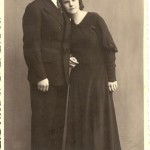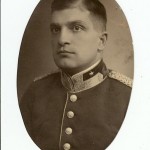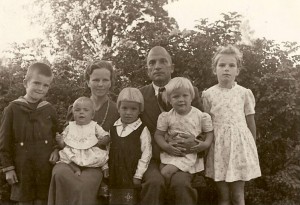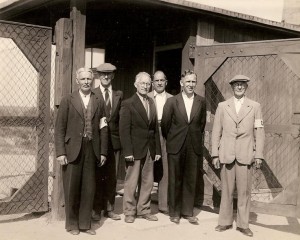To Ukraine and Germany
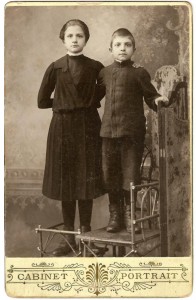
Before the refugee period in Ukraine: Albins Simsons (10 years old) with his sister in Latvia in 1909
Albins Simsons’ father was a butcher in Bauska. At the beginning of the First World War in 1914, the Tsarist government issued an order to evacuate the inhabitants of Kurzeme. As a result, Albīns’ family, the same as three quarters of a million other Latvian inhabitants, left their homes and fled or were evacuated to territories to the east of Latvia. Albins’ family arrived in Odessa, Ukraine in 1914, where his father died soon afterwards. At the age of sixteen, Albins had to leave school and become the family’s breadwinner. He lived through the Russian Civil War and the beginning of the Communist regime. He and his mother were only able to return to Latvia in 1921.
Soon after returning, Albīns became a Latvian railway policeman. He worked at the Zemgale Passport Control Station and also near the Polish border where he met Zelma, a teacher. They married and were soon raising a family of five children.
Their peaceful life was interrupted by the Second World War. Zelma remembers:
When the front line inescapably approached Latvia again in 1944, with the threat of repeated occupation by the Soviet Union, Albins Simsons arranged permission for his family to travel to the West, but he himself remained in Latvia, because he had not been given leave from his post. At that time they lived in the Pārventa suburb of Ventspils. Zelma recalls:
For Zelma and their five children, fleeing Latvia was full of hardship. The youngest daughter was two years old, and the eldest was ten. They had no safe destination in Germany. Transportation was overcrowded, throngs of refugees were everywhere and it was even difficult to get food. A number of times, a child was almost lost. Zelma relates:
The older children helped the younger ones, lugging suitcases and their other possessions. Zelma remembers:
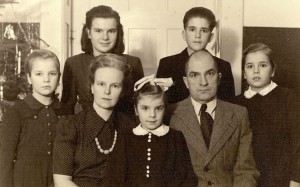
A photograph of the Simsons family at Christmas 1949, which was sent to possible sponsors in the USA
Zelma wrote to the Red Cross in Berlin, notifying Albīns of their location. They were lucky. In December Albīns had already found them, and once again the whole family was together. This was followed by life in DP camps in Germany where the children also went to school. Albīns got work in the so called “Melnie”„Melnie” were the English, American and French occupation forces' assistance brigades, that helped with transport, security and other jobs. They typically wore black uniforms and lived in caserns, visiting their families on the weekend. and worked in Bochum, in the English Zone. Zelma taught children in the camp schools.


